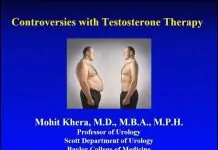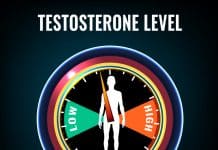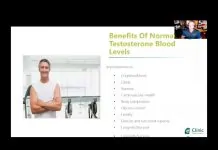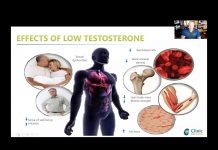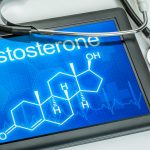Normal values may vary from lab to lab depending on what reference range they use. Your doctor will have your test results in one to two days. Depending on the country, ranges are in nanograms per deciliter (usually in the United States) or nanomoles per liter (Europe and other countries). The conversion factor is:
Testosterone in ng/dL × 0.035 = Testosterone in nanomoles per liter
Table 2. Laboratory Ranges and Codes (courtesy of LabCorp)
| Total Testosterone for Males | ||||||||
| Age | ||||||||
| 7 months to 9 years | Less than 30 ng/dL (< 1.04 nmol/L) | |||||||
| 10–13 years | 1–619 ng/dL (0.04–21.48 nmol/L) | |||||||
| 14–15 years | 100–540 ng/dL (3.47–18.74 nmol/L) | |||||||
| 16–19 years | 200–970 ng/dL (6.94–33.66 nmol/L) | |||||||
| 20–39 years | 270–1,080 ng/dL (9.00–37.48 nmol/L) | |||||||
| 40–59 years | 350–890 ng/dL (12.15–30.88 nmol/ L) | |||||||
| 60 years and older | 350–720 ng/dL (12.15–24.98 nmol/L) | |||||||
| Reference Intervals for Free Testosterone (free is about 2-4 percent of total) | ||||||||
| Age | ||||||||
| 20–29 years old | 9.3–26.5 picograms/mililiter (pg/mL) | |||||||
| 30–39 years old | 8.7–25.1 pg/mL | |||||||
| 40–49 years old | 6.8–21.5 pg/mL | |||||||
| 50–59 years old | 7.2–24.0 pg/mL | |||||||
Many doctors treat men who have under 350 ng/dL of total testosterone and who present with most of the symptoms listed by the ADAM questionnaire.
https://www.excelmale.com/threads/405…+questionnaire





